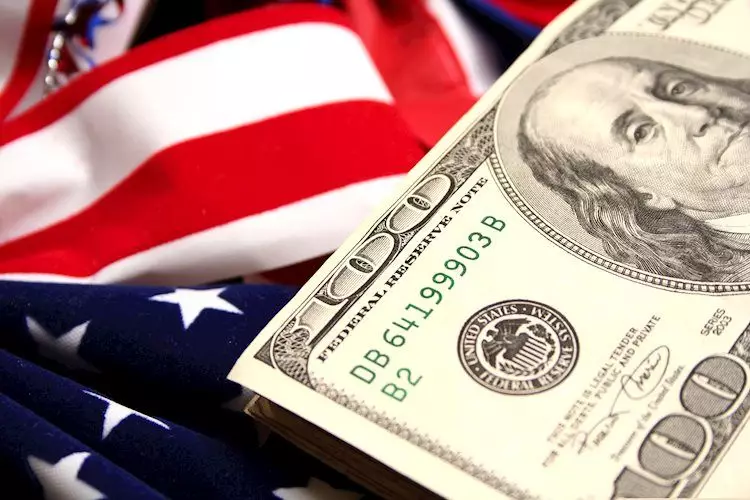In the lead-up to the Federal Open Market Committee (FOMC) meeting, the US Dollar has experienced a notable decline. The market is rife with speculation regarding the potential outcomes of the FOMC’s decision on interest rates, which has led to increased volatility in the currency. Currently, the US Dollar Index (DXY), a measure of the value of the USD relative to a basket of six major currencies, indicates a bearish sentiment among traders. With a predominant expectation for a 25-basis-point (bps) cut in interest rates, analysts remain divided, with some forecasting a more aggressive 50 bps reduction.
Market consensus points towards a rate cut, yet the possibility of a 50 bps reduction has captured attention. Despite considerable job market weaknesses that might typically serve as a catalyst for such a drastic cut, there are signs of resilience in broader economic indicators. This disconnect raises questions about the reasonableness of market pricing, which currently reflects a nearly 70% probability for a larger cut. Such an expectation may not translate to reality given the current economic climate, reinforcing the uncertainty enveloping the dollar’s value.
The FOMC’s Dot Plot — a graphical representation of FOMC members’ projections for future interest rates — will be of particular significance today. Investors and analysts alike will scrutinize this data for indications of a dovish pivot. Any signals that suggest a prolonged period of lower rates could precipitate further weakness in the US Dollar, fundamentally altering market dynamics.
Taking a closer look at the technical picture of the DXY, indications remain grim. Recent movements suggest a declining trend, spurred by the failure to maintain ground above critical thresholds such as the 20-day Simple Moving Average (SMA). The Relative Strength Index (RSI) — a tool for assessing momentum — is trading below the 50 mark, signaling bearish sentiment prevailing amongst traders. Additionally, the Moving Average Convergence Divergence (MACD) continues to show lower green bars, further corroborating the outlook for the US Dollar.
Support levels for the DXY are found at 100.50, 100.30, and the psychological level of 100.00, while resistance is likely encountered at 101.00, 101.30, and 101.60. This technical backdrop suggests that if the Fed leans towards a more aggressive approach in adjusting rates, the downward pressure on the dollar could intensify, potentially breaking through significant support levels.
The US Dollar’s status as the world’s primary reserve currency is deeply entrenched in global economic history. Following the end of World War II, the USD replaced the British Pound as the hallmark currency, largely due to the strength of the US economy and its political stability. This transition saw the dollar become the dominant currency used in international trade and finance, making it an integral part of the global economic landscape.
Historically, the dollar was once physically tied to the gold standard; however, this relationship was severed following the Bretton Woods Agreement in 1971. Despite the absence of a tangible backing, the dollar’s value remains primarily influenced by the strategies and decisions of the Federal Reserve. The Fed’s key mandates of sustaining price stability and promoting full employment dictate its monetary policy moves, where adjustments in interest rates act as the primary tool for achieving these goals.
The interplay between inflation and interest rates is crucial in guiding the value of the US Dollar. When inflation threatens to exceed the Fed’s target of 2%, rising interest rates can bolster the dollar’s value. Conversely, when deflationary pressures or high unemployment loom, rate cuts typically weaken the dollar. In extreme economic conditions, the Fed might resort to quantitative easing (QE) — a strategy designed to expand the money supply and stimulate the economy by buying government securities. While QE can potentially dampen the dollar’s value in the medium to longer term by increasing liquidity in the market, its effectiveness remains a subject of debate among economists.
In contrast, quantitative tightening (QT) is aimed at stabilizing the dollar by ceasing asset purchases. This process can bolster dollar strength by reducing the money supply and promoting more stringent banking conditions. Such policy shifts indicate the Fed’s proactive stance in managing both inflation and economic growth, which directly affects the currency’s trajectory.
As today’s FOMC meeting unfolds, the potential for meaningful shifts in monetary policy becomes ever more critical. Observers must remain vigilant as the decisions made will not only affect interest rates but also set the tone for the future trajectory of the US economy. Should the Federal Reserve signal a more dovish stance with significant rate cuts, the US Dollar is poised for further weakness. In contrast, a measured approach may provide the stability necessary to rejuvenate confidence in the currency. The world keenly awaits how the Fed navigates this complex economic landscape, which will undeniably have ripple effects across global markets.

